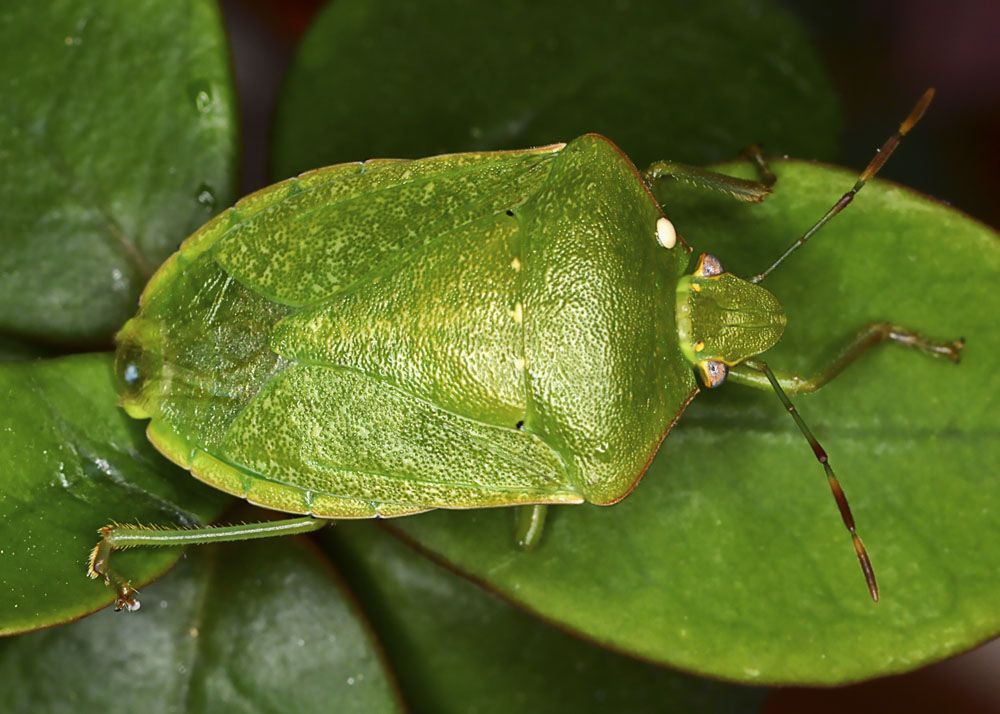
Southern Green Stink Bug – Nezara viridula
Southern Green Stink Bug: Appearance, Territory, Damage and Life Cycle
Latin Name: Nezara Viridula
Appearance: Nezara Viridula is a plant-feeding stink insect that is also known as the southern green stink bug, southern green shield bug, or green vegetable bug. It is said to have originated in Ethiopia, but it is now found all over the world. It is an economically significant pest on such crops because to its affinity for specific types of legumes, such as beans and soybeans.
Stink bugs are members of the Pentatomidae family, and adults may be identified by their shield-shaped, five-segmented antennae and foul stench. The southern green stink bug is a polyphagous feeder that attacks a variety of essential food crops.
Hosts Plants: Grasses and weeds, corn and other grains, peach trees, soybeans, peanuts, and pecan trees are all common plants that attract stink bugs. Eastern redbud, holly, and mimosa are among the ornamental plants that excite their attention, and they are frequently found on fruit trees such as peach, apple, and pear. The majority of stink bugs are plant feeders. In the spring, the first generation frequently feeds on weeds or grasses. They frequently wander into fields, orchards, and residential environments as they mature. Stink bugs graze on apples, peaches, berries, peppers, beans, and pecans in these conditions.
Territory: Ethiopia is thought to be the birthplace of the southern green stink insect. Its range now extends throughout the tropical and subtropical regions of Europe, Asia, Africa, and the Americas.
Damage Insect Cause: Nezara Viridula feeds on all plant components, but prefers developing shoots and fruit. Feeding damage to fruit appears as hard brownish or black blotches, and attacked shoots generally wither or die off. Young fruit development is slowed, and wilted fruits may fall off the plant. Fifth instar nymphs and adults do the most damage, whereas younger instars have a minor impact.
Life History and Habits: The southern green stink bug has a life cycle that lasts 65 to 70 days. It is most common between October and December, then again between March and April. In warm regions, the southern green stink bug can have up to four generations every year. As an adult, the southern green stink bug hides in the bark of trees, leaf litter, or other sites to shelter itself from the elements. As spring temperatures rise, the southern green stink bug emerges from its winter hiding place and begins eating and oviposition.
